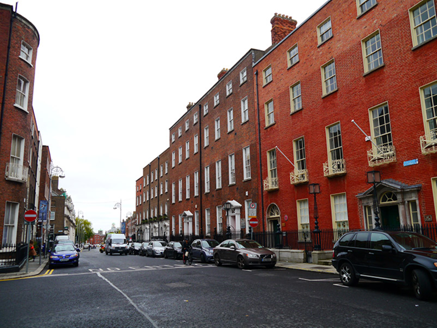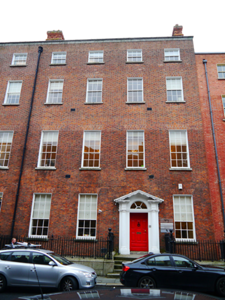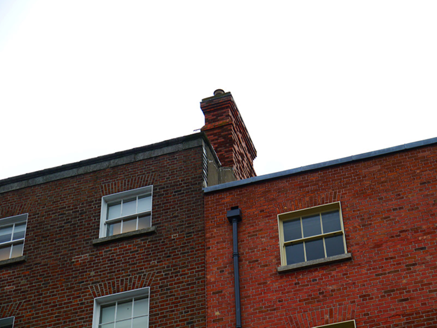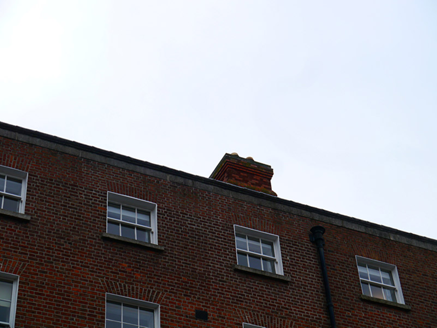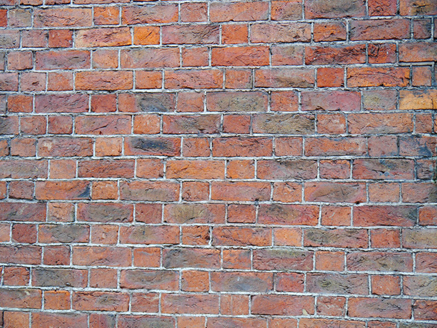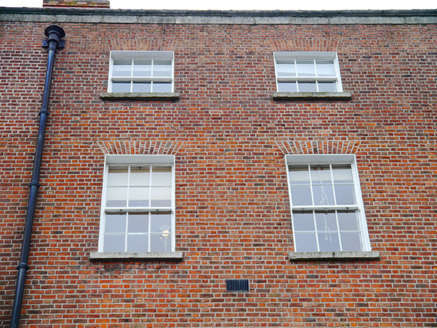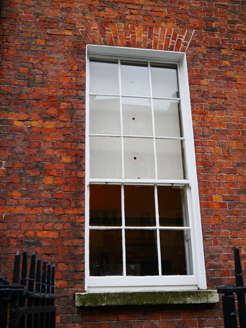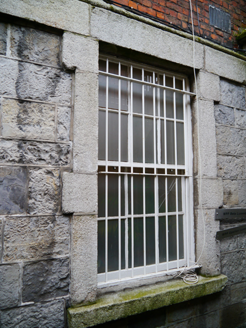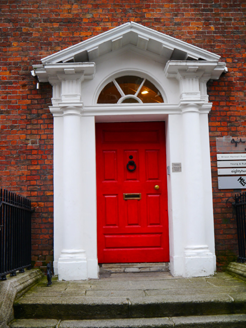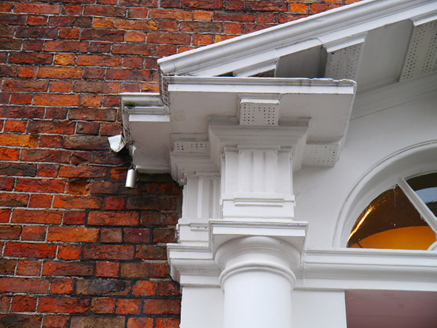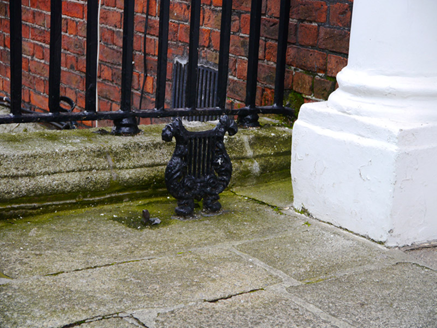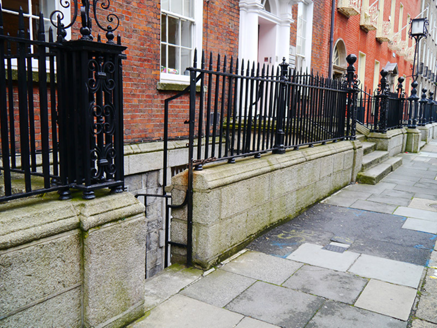Survey Data
Reg No
50930013
Rating
Regional
Categories of Special Interest
Architectural, Artistic, Historical
Original Use
House
In Use As
Office
Date
1770 - 1775
Coordinates
316370, 233333
Date Recorded
21/10/2015
Date Updated
--/--/--
Description
Terraced four-bay four-storey former townhouse over basement, built 1771, as a pair with building to north (50930323). Now in commercial office use. Pitched roof with M-profile roof to rear (east), having red brick chimneystacks with lipped yellow clay pots to party walls. Concealed gutters with cast-iron hopper and downpipe breaking through to north. Roof concealed behind brick parapet with masonry coping. Red brick walling laid in Flemish bond over ashlar quarry faced granite basement with moulded granite stringcourse over. Square-headed window openings with projecting masonry sills, patent reveals and brick voussoirs; that to basement with granite block and start surrounds and cast-iron grilles affixed to reveals. Six-over-six timber sliding sash windows with horns, nine-over-six to ground floor, three-over-three to third floor. Round-headed door opening to south-central bay with painted rendered doorcase comprising Doric columns on plinth stops rising to triglyphed frieze having open modillioned pediment surmounting fanlight over eight-panelled timber door with brass furniture opening onto granite entrance platform having cast-iron bootscraper and four steps to street flanked by cast-iron railings on granite plinth with decorative corner posts enclosing basement wells to north and south. Square-headed door opening at basement level located beneath entrance platform, with glazed toplight and recent timber door. Two plainly detailed timber louvered doors located in north basement well beneath street level. Basement well to north accessed by recent concrete steps with steel handrail from street level. Street fronted on the east side of Ely Place, abutted by Ely House to the south (50930012).
Appraisal
Built as one of a pair with No. 5, (50930323) by Gustavus Hume. It was the house Fitzgibbon Lord Chancellor and later Earl of Clare. Characterised by balanced proportions and restrained detailing, the principal east elevation enriched by a good classical doorcase and railings. Despite the insertion of some replacement fabric and being extensively extended to the rear, the pair is an excellent example of the Dublin Georgian idiom, and contributes to the architectural continuity of this streetscape. According to Casey (2005) 'On the ground floor is a large ballroom with early nineteenth century detailing, while on the first floor are three rooms (perhaps supper rooms) and a vestibule, with deep coved ceilings and decorative stucco borders.' Originally named Hume Row, Ely Place was laid out in 1768, and was named after the surgeon Gustavus Hume who built his house at No. 1 Hume Street (now demolished). With the construction of Ely House (50930012) in 1770, Ely Place developed as a desirable residential street throughout the late-eighteenth and early-nineteenth centuries.
